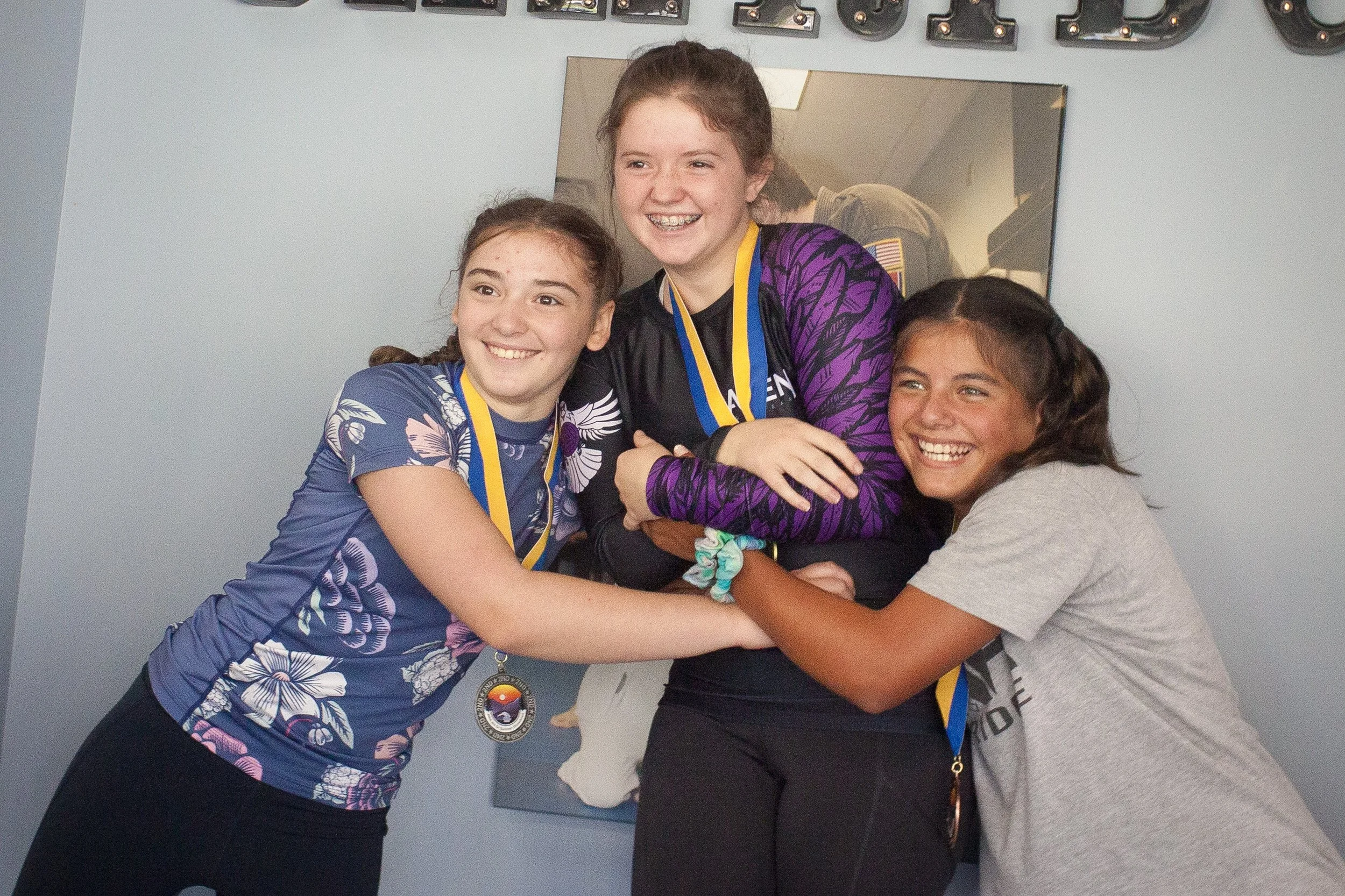This past weekend in our Jiu Jitsu competition training, I broke down the different directions that a match can go and what kinds of things you need to consider for each pathway. I thought I’d share it here to make it easier for anyone that wants help studying this at home and thinking about where you need to focus in your training.
Jiu Jitsu is a very complex game to play and approaching your training/matches with a plan can be really helpful, especially when entering a competition and hoping to increase your chances of winning! Enjoy!
Match Start - 4 Options
There are 4 main ways that a jiu jitsu match is going to start. It is best to be prepared for all 4! But also, go into the match with a plan for which pathway you would prefer the match take to get to the ground.
1. Takedown
• Plan your gi and no-gi game around stance, grip fighting, and your best takedowns, ideally in a cohesive system.
2. Takedown Defense and Counter-Attack
• Be ready to counter takedown attempts and capitalize on weaknesses in your opponent’s attack.
3. Pull Guard
• Plan what grips you’re trying to pull with, and what guards you might connect to. Have a clear system for sweeps, submissions, and retention.
4. Opponent Pulls Guard
• Train connecting guard passes together and reacting quickly when your opponent pulls guard.
Now, let’s break each of these 4 options down a little more. Option A is the ideal, option b is to help us prepare for when things don’t go as planned!
1. Takedown
1a. Your Takedown Worked (Top Position)
• Are you in guard? Break the connection and start passing.
• Already in a good passing position? Secure it and maintain control while passing.
1b. Takedown Fails
• Be ready to transition to takedown defense (Option 2) or react if your opponent pulls guard (Option 4).
• Alternatively, consider pulling guard yourself (Option 3) or reset your takedown strategy.
Tip: Don’t panic and stray to far from your gameplan just because it hasn’t worked yet. Your opponent hasn’t taken you down yet either, so keep looking for openings!
2. Takedown Defense and Counter-Attack
2a. Successful Defense and Counter-Attack
• Chain your attacks to your takedown defense. What submissions and positions are you transitioning to? Stay offensive.
Tip: Remember it’s often best to fully stop the takedown, and then transition into a good position to attack from. For example - sprawl to front headlock to the back is safer then attempting a guillotine in the middle of getting taken down. The guillotine could work but could also burn your arms and put you on bottom down by 2 points.
2b. You Got Taken Down
• Recover guard or work from your bottom game. Focus on sweeps or submissions from the bottom.
• Mindset Tip: Don’t feel like you’ve lost—reset, and stay active on the bottom.
Caution: While planning to just counter the takedowns and wait for your opponent to shoot or pull guard can be an effective way of getting to the top, avoid relying solely on this strategy, as it may appear passive and lead to stalling penalties, losing referee’s decisions, and overall not much happening in your matches means not much getting better either. Incorporate low-risk takedown attempts (snap downs, ankle picks, etc.) while awaiting your opponent’s next move.
3. Pulling Guard
3a. Successful Guard Pull
• You’ve got your grips and control. Focus on quick sweeps for points or go straight for a submission from the bottom.
Tip: Guard retention is key, but don’t stay defensive too long—make a connection to your opponent and attack!
3b. Opponent Broke Your Connection (Guard Retention)
• Switch to guard retention, regain control, and immediately get back to offense. Don’t stay in defensive mode too long.
3c. Guard Passed
• Don’t panic. Recover guard, then work toward sweeps or submissions from the bottom.
Tip: Remember jiu jitsu is a game unlike other sports and we have a move that wins the match at any time, no matter the score. You can be down 100-0 and win the match with a submission in the final seconds. There isn’t a move like that in other sports. Don’t panic! Stay focused on doing the next right thing.
4. Opponent Pulls Guard
4a. You Immediately Pass
• Pass during the guard pull, tighten up your top game and work toward a submission. Stay aggressive but not rushed and capitalize on your passing success.
4b. Opponent Successfully Pulled Guard
• Break his guard connection and begin passing. If already in a good passing position, maintain control and start working your pass.
* Submission Defense
• Your opponent caught a submission somewhere along the way, maybe even right from standing: stay calm and defend. Look to immediately connect to an offensive move or regain control once you’re safe.
Final Thoughts: It’s good to regularly analyze everything above to decide which areas you need to focus on in your training. During the offseason or early stages of a season, focus on your weakest links and try to start your matches with those areas every time so that they get stronger. As your next tournament draws closer, spend those final weeks mostly working your strongest game and fine tuning it for competition.
Was this useful for you? Share this with a training partner that might also find it helpful!

